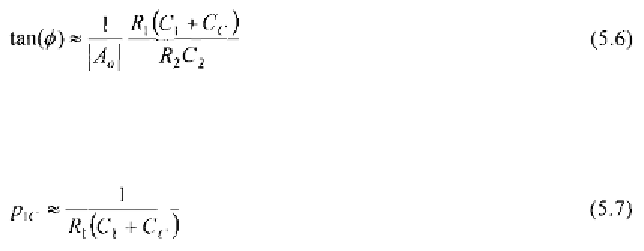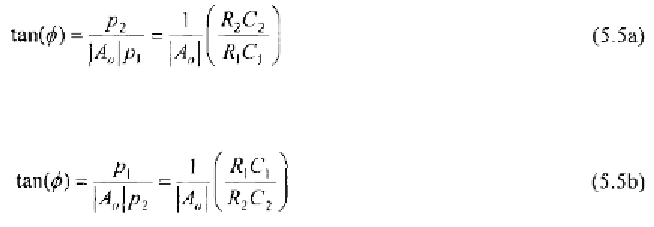Environmental Engineering Reference
In-Depth Information
Conversely, if
we would have
To guarantee a phase margin greater than 45°, must be greater than
unity. Hence, from (5.5a) and (5.5b), we must ensure that the ratio between
the two time constants is in the order of the DC gain. For example, assuming
the two equivalent resistances to be equal and a typical gain of 30 one of the
capacitances should be more than 30 times the other, to guarantee stability
within proper margins.
At this point, the most intuitive way to provide stability is to
add
a
capacitance in parallel to (or thus setting the dominant pole at the
input or the output. If we adopt this strategy, the choice of where to insert the
compensation capacitor depends on convenience in terms of lower added
capacitance. This simple compensation approach is called dominant-pole
compensation, which is rarely used, except in single-stage (cascode)
amplifiers, because it requires large compensation capacitors and leads to
feedback amplifiers with very low bandwidth. To show the reduction in
bandwidth, without loss of generality consider the amplifier as being in
unitary feedback and set the dominant pole at the input by adding the
compensation capacitor
to
Thus (5.5b) turns out to be
and the dominant pole after compensation,
which defines the open-loop
bandwidth
must be lower than the second pole (which remains unchanged to
reduced by the DC gain times the tangent of the phase margin (always higher
than 1)










